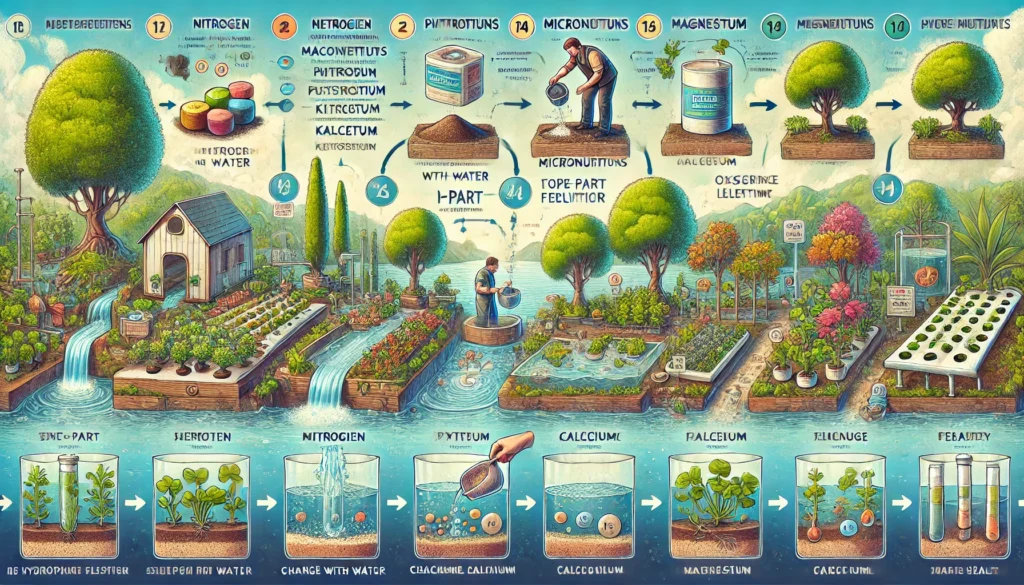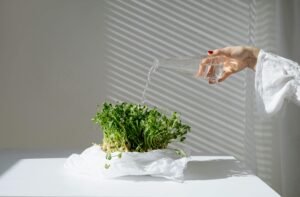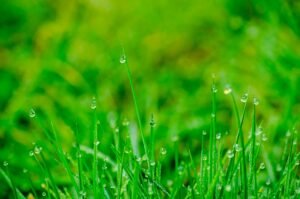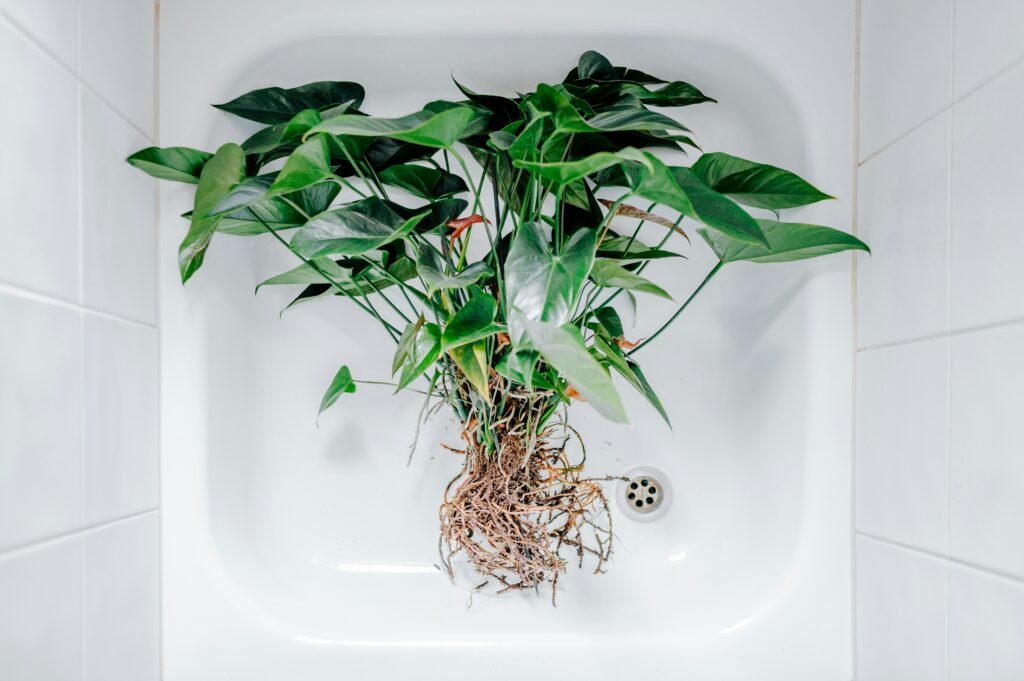Hydroponics, the science of growing plants without soil, relies heavily on water as the primary medium for delivering nutrients to plants. This innovative technique offers numerous advantages, including faster plant growth, reduced water usage, and the ability to cultivate crops in areas with poor soil quality. However, the success of a hydroponic system hinges on the proper fertilization of the water. Fertilizing water for hydroponics is a precise process that requires a deep understanding of plant nutrient needs, water chemistry, and system maintenance. This article delves into the intricacies of hydroponic fertilization, providing a comprehensive guide on how to fertilize water effectively for optimal plant growth.
Understanding Hydroponic Nutrients
Before diving into the process of fertilizing water, it’s essential to understand the role of nutrients in plant growth. In traditional soil-based agriculture, plants obtain nutrients from the soil. In hydroponics, these nutrients must be dissolved in the water, creating a nutrient-rich solution that can be absorbed directly by the plants’ roots.
The key nutrients required for plant growth are categorized into macronutrients and micronutrients.
- Macronutrients:
- Nitrogen (N): Crucial for leaf and stem growth.
- Phosphorus (P): Important for root development and flowering.
- Potassium (K): Enhances overall plant health and disease resistance.
- Micronutrients:
- Calcium (Ca): Strengthens cell walls.
- Magnesium (Mg): Central to chlorophyll production.
- Sulfur (S): Essential for protein synthesis.
- Iron (Fe), Manganese (Mn), Zinc (Zn), Copper (Cu), Boron (B), and Molybdenum (Mo): Required in trace amounts for various physiological processes.
These nutrients must be provided in the correct proportions to avoid deficiencies or toxicities that can hinder plant growth.
Selecting the Right Fertilizer
When fertilizing water for hydroponics, choosing the right fertilizer is critical. Hydroponic fertilizers differ from traditional fertilizers in that they are specifically formulated to dissolve completely in water, ensuring that nutrients are readily available to the plants. There are two primary types of hydroponic fertilizers:
- One-Part Fertilizers: These are pre-mixed solutions that contain all the necessary nutrients in a single product. They are convenient and easy to use, making them ideal for beginners.
- Two-Part or Three-Part Fertilizers: These consist of separate components that must be mixed together. For example, a two-part fertilizer might include a bottle labeled “Part A” for macronutrients and another labeled “Part B” for micronutrients. This allows for more precise control over nutrient ratios, making them suitable for more experienced growers.
When selecting a fertilizer, it’s essential to consider the type of plants being grown, as different plants have varying nutrient requirements. Additionally, many commercial hydroponic fertilizers are designed for specific stages of growth, such as vegetative or flowering phases, so choosing a formula tailored to your plants’ current stage is advisable.
Preparing the Nutrient Solution
Once you’ve selected the appropriate fertilizer, the next step is to prepare the nutrient solution. This process involves mixing the fertilizer with water to create a solution that meets the specific needs of your plants. Here’s a step-by-step guide:
- Measure the Fertilizer: Follow the manufacturer’s instructions to measure the correct amount of fertilizer. Precision is crucial, as over- or under-fertilizing can lead to nutrient imbalances.
- Mix with Water: Add the measured fertilizer to a container of water. It’s essential to use clean, filtered water to avoid introducing contaminants that could harm the plants. Stir the solution thoroughly until the fertilizer is completely dissolved.
- Check the pH Level: The pH of the nutrient solution is a critical factor in nutrient absorption. Most plants prefer a slightly acidic pH range of 5.5 to 6.5. Use a pH meter or test kit to check the pH level of the solution. If necessary, adjust the pH using pH up or pH down products to bring it within the desired range.
- Check the Electrical Conductivity (EC): The EC of the solution indicates the concentration of dissolved salts (nutrients) in the water. A higher EC means a higher nutrient concentration. Use an EC meter to measure the solution’s conductivity, ensuring it falls within the optimal range for your plants. Different plants have varying EC requirements, so consult a guide or the fertilizer packaging for specific recommendations.
- Add the Solution to the System: Once the pH and EC are within the desired range, add the nutrient solution to your hydroponic system. Ensure the solution circulates evenly throughout the system, providing consistent nutrient access to all plants.
Maintaining the Nutrient Solution
Fertilizing water for hydroponics is not a one-time task but an ongoing process that requires regular monitoring and adjustments. Here are some tips for maintaining the nutrient solution:
- Monitor pH and EC Regularly: The pH and EC of the nutrient solution can fluctuate over time due to factors such as plant uptake and water evaporation. Check these levels daily and make adjustments as needed to ensure optimal conditions.
- Top Off the Solution: As plants absorb nutrients and water, the solution level in your hydroponic system will decrease. Regularly top off the system with fresh water to maintain the proper solution volume. Be mindful not to dilute the nutrient concentration too much; if needed, add more fertilizer to maintain the correct EC.
- Change the Solution Periodically: Over time, certain nutrients may become depleted, while others may accumulate to harmful levels. To prevent nutrient imbalances, it’s advisable to completely replace the nutrient solution every two to four weeks. When doing so, thoroughly clean the system to remove any residue or buildup.
- Observe Plant Health: Your plants’ appearance can provide valuable clues about the health of your nutrient solution. Yellowing leaves, stunted growth, or other signs of distress may indicate nutrient deficiencies or toxicities. If you notice any issues, review your fertilization process and make necessary adjustments.
- Keep Records: Maintaining a log of your nutrient solution’s pH, EC, and any adjustments made can help you track trends and identify potential issues before they become serious problems.
Conclusion
Fertilizing water for hydroponics is a delicate balance that requires attention to detail and a solid understanding of plant nutrition. By selecting the right fertilizer, carefully preparing the nutrient solution, and maintaining it through regular monitoring and adjustments, you can create an ideal environment for your plants to thrive. Whether you’re a novice grower or an experienced horticulturist, mastering the art of hydroponic fertilization will lead to healthier plants, higher yields, and greater overall success in your hydroponic endeavors.








